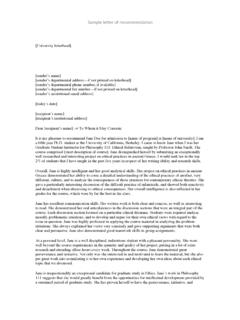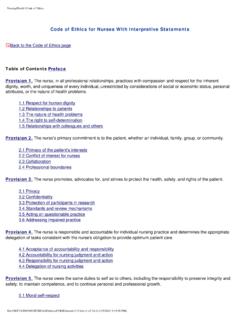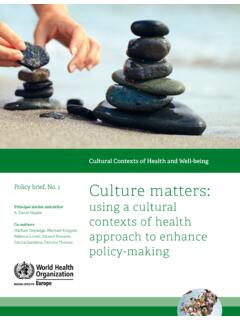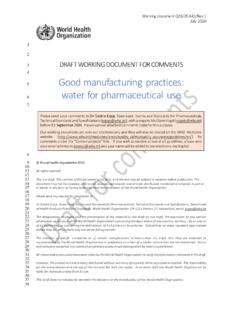Transcription of Guide to Best Practices in Faculty Mentoring
1 Office of the ProvostGuide to best Practices inFaculty MentoringAcknowledgments 3 Introduction 4 Letter from the Provost 5 Part I Mentoring Overview 6 Introduction 6 Rationale and Definitions 6 General Principles 7 Mentor Roles 7 Mentoring Foci 8 Sponsorship vs. Mentorship 8 Formal vs. Informal Mentoring Relationships 10 Characteristics of Effective Mentoring 11 Mentoring Continuum 11 Qualities of Effective Mentors 11 Qualities of Responsible Mentees 12 Considerations for Effective Mentorship across Gender/Race/Ethnicity/Sexual Orientation/ Culture/Religion 12 Part II Organizing a Mentoring Program.
2 best Practices 14 Establishing School/Departmental Mentoring Program 14 Mentor/Mentee Pairing 15 Responsibilities 15 Frequency of Mentoring Meetings 15 Faculty Group Mentoring 15 Interdisciplinary/Team Mentoring 15 Establishing Oversight, Evaluation, and Sustainability 16 Part III Tools for Mentors 17 Part IV Strategies for Mentees 18 Mentoring (Developmental) Networks 19 Appendices 20 Appendix A 20 Checklist: best Practices for Schools/Departments, Mentors, and Mentees 20 For Schools/Departments 20 For Mentors 21 For Mentees 21 Appendix B 22 Logic Model for Schools/Academic Units Implementing Mentoring Programs 22 References 23 CONTENTS1 The fifteen members of the Provost s Advisory Council for the Enhancement of Faculty Diversity provided leadership and counsel in creating this Guide .
3 Individually, each possesses a deep commitment to advancing Faculty diversity at Columbia; collectively, they represent the enormous breadth of Columbia s academic community. We particularly note the invaluable contributions of our Climate Change Working Group: We also want to give special thanks for the leadership and support of Lee Goldman, Executive Vice President and Dean of the Faculties of Health Sciences and Medicine and Chief Executive of Columbia University Medical Center, as well as the staff members of the Office of the Senior Vice President for Faculty Affairs and Career Development at Columbia University Medical Center and the Office of the Provost, who played a critical role in researching and assembling Lapiner Director of Faculty Professional Development, Columbia University Medical Center Shana L. LassiterAssistant Provost for Faculty Diversity and Inclusion, Columbia UniversityAdina Berrios BrooksDirector for Faculty Diversity and Inclusion, Columbia UniversityThis Guide is a result of a review of relevant literature and discussions with the Climate Change Working Group as well as with deans and senior and junior Faculty throughout the University.
4 While these discussions were focused on the mentorship needs of diverse Faculty , it was recognized that attention to the Mentoring needs of all Faculty would substantially benefit the university. Thus, this Guide provides information on the principles of Mentoring , with attention to the nuances of Mentoring important to diverse Faculty . First printing, August L. Taylor, Chair, Working Group; Office of the Executive Vice President and Dean of the Faculties of Health Sciences and Medicine; Office of the Chief Executive, Columbia University Medical Center Katherine W. Phillips Office of the Dean,Columbia Business School Ruben L. Gonzalez Jr. Department of Chemistry, Faculty of Arts and Sciences Dennis A. MitchellOffice of the Provost;Office of the Dean and Division of Community Health, College of Dental Medicine Samuel K. Roberts Department of History, Faculty of Arts and Sciences; Department of Sociomedical Sciences, Mailman School of Public Health The Offices of the Senior Vice President for Faculty Affairs and Career Development at CUMC and the Vice Provost for Faculty Diversity and Inclusion developed this Guide in collaboration with the Provost s Advisory Council for the Enhancement of Faculty Diversity.
5 This Guide was developed to help academic leaders and Faculty members who wish to use Mentoring as a strategy to facilitate Faculty success. Specifically, this Guide was written to inform three key constituencies: Schools/departments wishing to implement formalized Mentoring programs for Faculty Faculty who wish to act as mentors to junior Faculty , postdoctoral fellows, and graduate students Faculty who need or wish career guidance in addition to, or in the absence of, formal school/departmental Mentoring programsThese basic principles of effective Mentoring may be utilized by schools, departments, and individual Faculty to provide guidance to junior Faculty , in formats most suited to the needs and culture of the academic unit as well as to the individual. This Guide pays particular attention to the nuances of Mentoring of particular importance to women and diverse Faculty .
6 Finally, the Guide offers guidance to Faculty who may wish to broaden and increase their Mentoring opportunities and networks. A note on organization: Part I provides an overview of principles of Mentoring derived from a literature review Part II provides strategies and best Practices for academic units wishing to organize different types of Mentoring programs for Faculty Part III provides guidance for those committed to being mentors Part IV provides strategies and best Practices for mentees who are committed to identifying and optimizing their Mentoring relationships This Guide is written as a living document; in that spirit, we invite feedback on what works, what doesn t, and what should be added. Please address all comments and suggestions to Vice Provost for Faculty Diversity and Inclusion Dennis A. Mitchell at INTRODUCTION4 LETTER FROM THE PROVOSTDear Colleague:Columbia University aspires to be the go-to institution for the world s greatest scholars.
7 We cannot achieve this without realizing our core values of both inclusion and excellence. This requires sustained focus on equity in all of our efforts to recruit, hire, promote, and retain an exceptionally well-qualified Faculty . The University s Guide to best Practices in Faculty Search and Hiring, first released electronically in 2014, provides guidance for our recruitment and hiring efforts. The current Guide to best Practices in Faculty Mentoring serves as a companion resource, providing direction for promotion and retention efforts within each department or school. This Guide is intended to assist schools, departments, and Faculty in implementing Mentoring programs tailored to their needs. It does not replace existing University, school, or department procedures, but rather serves as a framework and supplemental resource.
8 It provides an overview and guidance for schools and departments seeking to develop new Mentoring programs, and serves as an asset for those schools and departments with robust Mentoring programs already in place. The Guide also provides targeted resources for mentors and mentees, with a particular focus on empowering junior Faculty members to seek and shape important Mentoring developed this manual because we believe that adherence to its guidelines will have a positive impact on Faculty success and will enhance the climate of inclusiveness University-wide, thus building a stronger University community. A thriving, diverse Faculty is essential to creating a dynamic learning and working environment that will prepare all of our students to lead in our global society. We hope you will find this resource valuable in your role as mentor, mentee, and/or champion of Mentoring initiatives within your unit.
9 Thank you for all that you do to strengthen our community and ensure the future excellence of Columbia University. Sincerely,John H. CoatsworthProvost 5 PART I Mentoring OVERVIEWINTRODUCTIONV ital Faculty are essential to Columbia University s mission to be one of the world s preeminent centers of research as well as a distinctive and distinguished learning environment. Mentoring is a highly successful, adaptable, and practical strategy for supporting Faculty members success and satisfaction across their career. Mentoring has been shown to enhance research productivity (Bland & Schmitz, 1986; Bland et al., 2002; Byrne & Keefe, 2002), to enhance teaching effectiveness (Williams, 1991), and to increase Faculty retention, recruitment, productivity and satisfaction, as well as to decrease Faculty attrition.
10 In addition, Mentoring may promote a more positive organizational climate (Corcoran & Clark, 1984; Melicher, 2000). RATIONALE AND DEFINITIONSD efinitions, concepts, and Practices of mentorship for university Faculty vary considerably, but all place value on a relational structure that provides specific knowledge required for Faculty to develop successful independent scholarship, as well as essential professional relationships that place Faculty within the network of scholars in their discipline. These are often framed as career advancing or instrumental functions or as psychosocial or expressive functions, but they are closely related and overlapping (Zellers, Howard, & Barcic, 2008; Chao, Walz, & Gardner, 1992; Mott, 2002). Though most frequently conceptualized as a single, formalized, dyadic, hierarchical relationship between a senior and junior Faculty member (Zellers, Howard, & Barcic, 2008), more recent concepts of Mentoring would suggest that effective Faculty Mentoring should involve both formal and informal relationships with a broad array of professional colleagues ( Mentoring networks, constellations, distributed Mentoring , partnerships) (Zellers et al.)








